Chapter 10. Parish Institutions
Reading Room/Village Hall
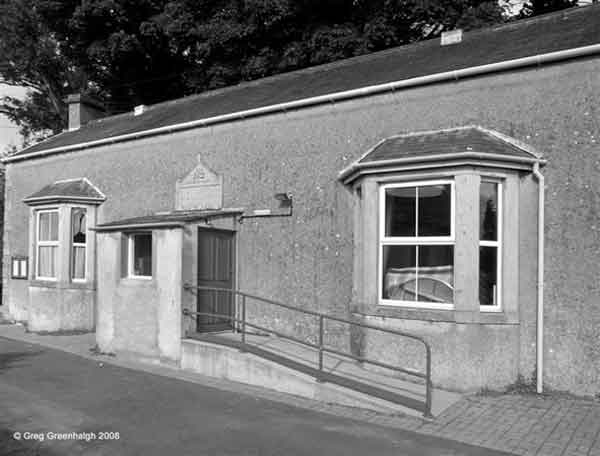
In 1895, Mrs Honora Wybergh (living at The Mount) had a village reading room built, demolishing two probably ruinous cottages to do this. [1] This generous benefactor then transferred ownership to five trustees who were entrusted with responsibility of operating the premises as a library and reading room. It seems that the good lady was no ardent feminist, as among the basic conditions set out in the original deeds was that use of the room was to be confined to males over the age of thirteen! (no women allowed to use it until 1932). [See Appendix 3] The general rules were set down – in particular, prohibition of use for political or religious purposes, for dancing, drama or musical performance. And so the gentlemen of the village enjoyed their leisure time relaxing with their newspapers and books, engaging in a game of billiards (apparently for a pound or two of sausage on occasions!) on the table which dominated the larger of the two rooms, refilling their pipes from time to time and debating the state of the nation. There must certainly have been much animated conversation as the Boer War was followed by World War I and then economic depression savaged the workforce. Then, as was to be repeated in later years, the use of the Reading Room declined. The solution, of course, was to hand it over to the ladies! In 1937 it was agreed by the trustees (who still included one of the original members, the Rev Sutton, Vicar of Bridekirk) that facilities should be given for women to form a Guild for meetings and classes, and to have the use of a room for the purpose. A Women’s Institute (WI) was formed at this time (see below) but it could only use the smaller (committee) room because the billiard table impeded other uses of the large room. However, not surprisingly, the women seized their chance and a year later the decision was taken to sell the billiard table and to convert the premises into a community centre for both male and female.
In 1940, after all the original trustees had died, a charity was established in its place and this charity scheme is still effective today. The trustees appointed in 1940 delegated the full responsibility for managing the Reading Room to the newly formed Women’s Institute (possibly illegally), for a price of 1/- per year (now 5p!).
The Reading Room steps opposite Beech House were walled up in 1951 (at a cost of £5-10-6d) after complaint from the Parish Council about their dangerous condition, and that year too the WI were permitted to add a porch; electrical heating was installed in 1958.
But the W.I. found it difficult to raise funds to maintain the place. By 1974 matters were serious and the then Secretary of the W.I. managed to arrange a meeting conducted by the Cumberland Council for Social Services. At this meeting, the Charity Scheme was seen for the first time by some and it then became apparent that since the Trustees had not met for over five years, all the co-opted members had ceased to hold office. With the two representatives of the WI and the two appointed by the Parish Council, a new start was made. [See Appendix 4]
A newly-appointed parish councillor [2] took the initiative and a new trustee body was established; it raised funds by a general appeal for essential works such as improvements to heating, kitchen area, toilets, storage area (the appeal raised £1592). For a number of years, there was an increase in activity and the Village Hall was thriving. [3] A play group started to use it several days per week.
In 1991 grants were obtained allowing replastering of the main hall and replacement of the windows. However the user groups gradually ceased to be viable. The playgroup ceased partly by the dearth of youngsters of the right age in the village and also by the difficulties of recruiting qualified supervisors which was now a requirement. This time also saw the demise of the W.I. as its members aged and the next generation did not seem to value it. The hall did briefly become national news in 1998 when Tony Robinson and the Channel 4 Time Team used the hall for 3 days as its operational base During this time they dug up various parts of the village, found fresh evidence of the great importance of Papcastle as a major Roman settlement, and then put all the ground together again. [4]
So again in 2000, there was a crisis meeting of the village under the banner of “Use it or Lose it”. The Hall needed £500 per year, for insurance, background heating etc. just to stay alive, even without anyone using it. A lively public meeting produced a new surge of activities but this only lasted a few years. [5] The Queen’s Jubilee in 2002 was royally celebrated with supper and sing-song, and the pre-Christmas mulled wine and mince pies evenings showed that there was still a strong spirit of jovial fellowship in the village.
Then in 2005, a resident , now retired from civil engineering [6], took an interest in the hall and steered through substantial physical improvements which have made the hall a very attractive venue. These included – the dividing wall was removed and replaced by movable partition doors, new heating and lighting installed, disabled toilet (and later renovation of the existing toilets) new kitchen, and floor renewal. The new setting led to a wide programme of activities and events. It was estimated in 2007 that a head count of persons passing through the door was no less than 5,500. Additionally from charges for these many activities and an even wider range of grants, the hall built up reserve funds to cover future maintenance needs. (The programme of regular activities in 2007-8 is given in Notes and References Section. [7]
Newsletter
Associated with the surge of activity in the Hall, a quarterly Newsletter was started in Spring 2000 by David Bromley as Secretary to the Trustees, for free distribution to all the village. In 2006, an improved version entitled “The Villager” was introduced. Still produced quarterly, by Mike Apperley, this 8-page (later 12-page) professionally printed item attempted to give a full picture of what was happening and about to happen in the village. Not only that but there were several offers to sponsor it. [8]
The Women’s Institute
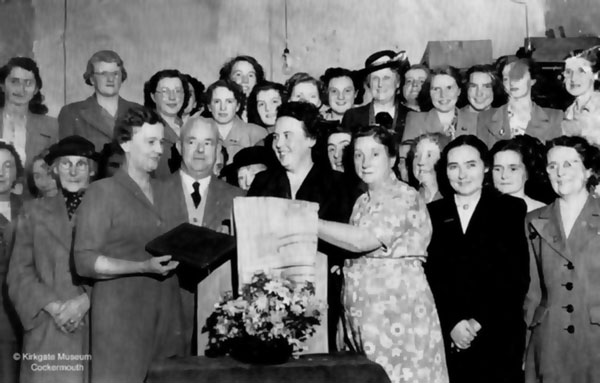
Papcastle & Belle Vue WI Presentation of an embroidered tablecloth by Ellen Jackson to Dr and Mrs Mallery from Australia representing Country Women of the World, October 1951
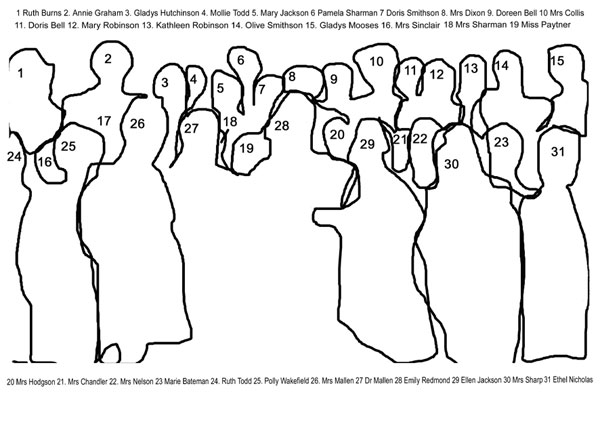
The WI became the mainspring of village social activities an early programme for 1939-40 appears in Notes and References.[9] Since its doors were opened to all-comers, the hall had become the venue for a wide variety of activities, primarily led by the W.I. and villagers retain many happy memories. Mary Strong retains a wealth of memories of following her mother’s footsteps into the WI. Her collection of WI programmes, dating from 1939, reflects the wide range of interests of the members. Mary fondly recalls celebrating her twenty-first birthday, with some sixty guests, to the music of an accordionist. She also tells of social activities in the Mission Room, sports days by the river and real “barn” dances. Elsie Mavir remembers the knock on her door in 1957 (soon after her arrival in the village) when she was told by a WI representative: “At our meetings on Thursday night, your presence will be our delight”. She never looked back and with countless others she certainly enjoyed the monthly Thursday evening meetings and the popular Christmas parties until membership dwindled in the 1990s. Lillian Barker recalls her mother, like Mary’s, being a founder member of the WI (and she has a photo of her mother at the celebration of the 21st anniversary of the local WI’s foundation).
Whist drives, dances and entertainment by local choirs and groups were all well supported and sounds of merriment frequently emanated from the hall on Saturday evenings. Classes included cake icing, sewing and tailoring. Such skills obviously assisted the ladies of the village in their efforts to make shirts and socks for the armed forces. The local Conservative Association also organised very successful social gatherings in the hall.
One of the few means of raising funds for upkeep of the Hall was by jumble sales. These were very popular and many came up from town, presumably to pick over the cast-offs of the “nobs” of Papcastle.
Some memories of the W.I.
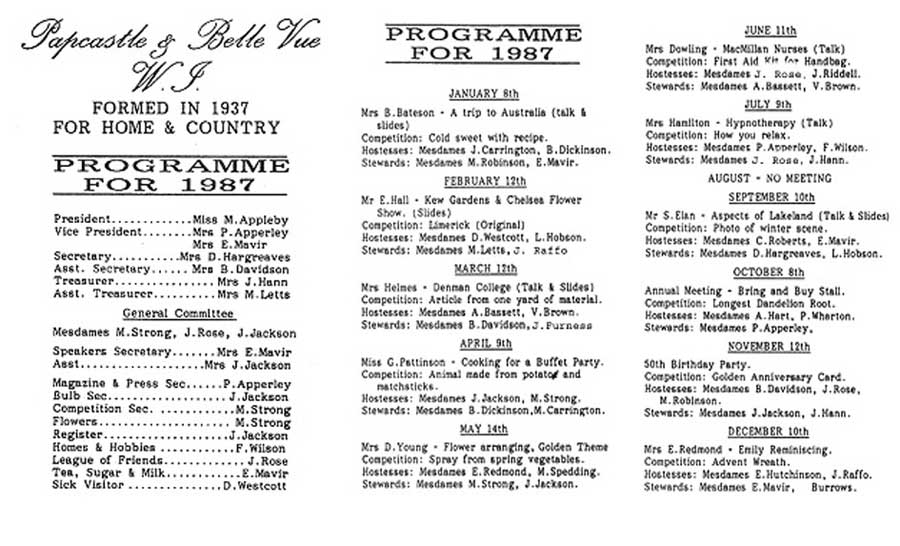
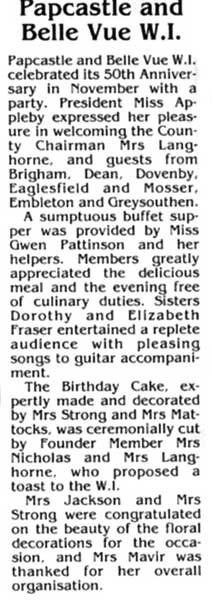
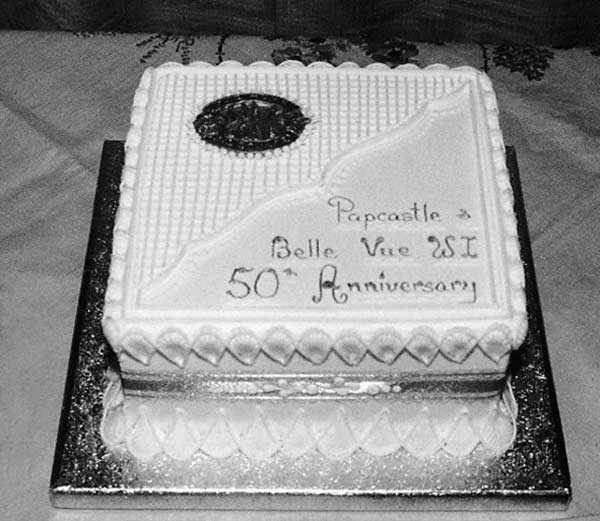
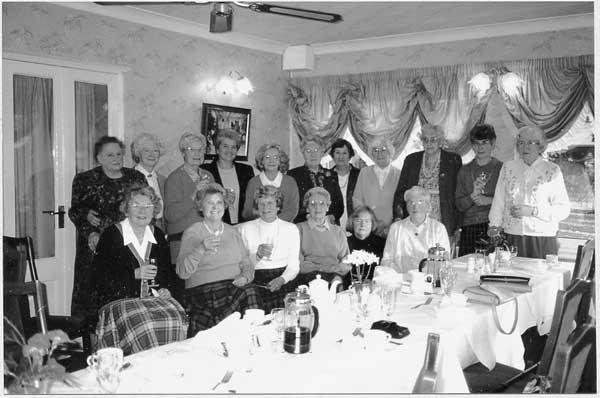
1997 60th Anniversary Lunch at Hunday Manor
Standing: Mary Strong, Eunice Hutchinson, Joan Brown, Joyce Jackson, May Spedding, Marion Appleby, Dorothy Hargreaves, Elsie Mavir, Nell Elliott, Betty Davidson, Dorothy Westcott
Sitting: Joan Riddell, Joan Carrington, Barbara Dickinson, Isabel Waite., Mary Letts, Elaine Leighton

Pat Apperley, Barbara Dickinson, Betty Davidson, Joyce Jackson, Mary Strong, Nell Elliott, Isobel Waite, Joan Carrington
Sadly within three more years the W.I had ceased to exist.
Village Website
Partly with the aim of allowing ex-pats from Papcastle the opportunity to keep in touch with events by seeing the Villager, a website was started in February 2007 and developed to give a wide range of information about the village. [www.papcastle.org.uk]
Sunday School/Mission
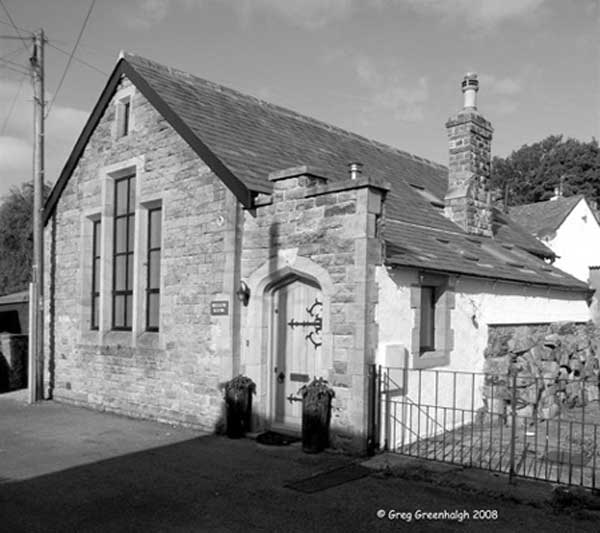
In 1873, a subscription was raised to establish a Sunday school. There was even a request to the Patron (Lord of the Manor) and the Vicar for it to be used as an elementary school during the week. However, as the cost of this would have fallen entirely on Papcastle itself, it appears never to have happened. The building also held church services. (The main church is at Bridekirk which is some way away.) Again by the 1990’s, attendance at services was at a very low level and facing considerable upkeep costs, the Parochial Parish Council decided to close and sell it. The intention was to use funds to develop a social facility in Bridekirk or nearby. The Mission was sold in November 2004 for £112,000 and then had extensive conversion work to make it a dwelling.
Public Houses
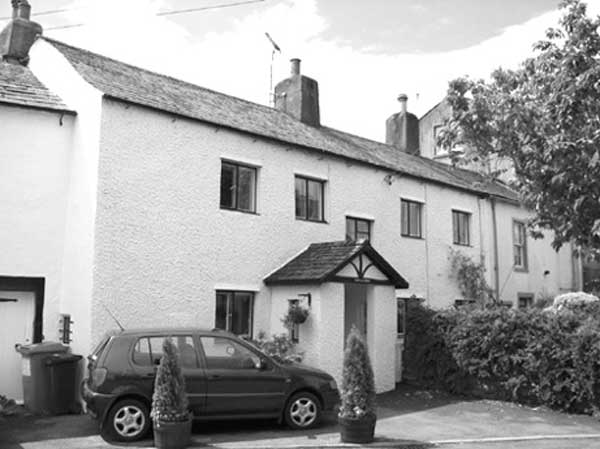
The village has sported three such places the Bird-in-Hand in the centre of the village which from the census returns was in operation in 1841, (probably before 1838 from the Tithe Agreement) run by Humphrey Archer, then Joseph Moncrief (who had previously been a shoemaker). His son age 36 was victualler in 1871; then from 1881 to at least 1901, Francis Smith had it. (With nephews Moncrieff, so still in the family somehow.) It became a baker’s shop after it had its licence withdrawn due to the rowdiness of Broughton people drinking there on their way home. The shop was run by a Mrs White.
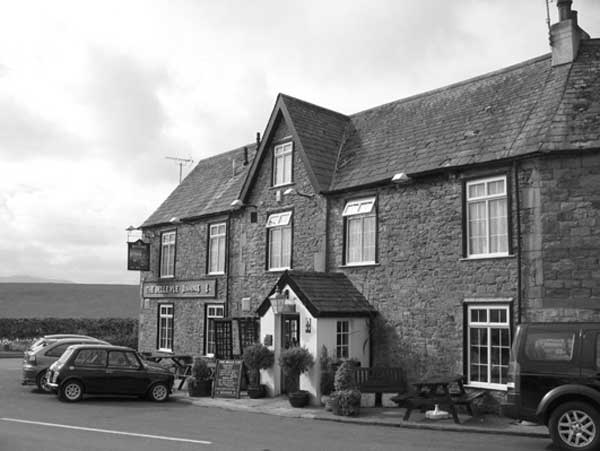
The other still operating is at Belle Vue, originally called the Belle Vue Inn, then for a time the Roundabout and now back to its original name. Starting probably just from a cottage, in the 1960’s it was a very small decrepit drinking room by now it has been developed and provides a range of good food as well as a much more amenable ambience.
There was also the Mason’s Arms probably run by Thomas Stainton in 1847 [10], John Tyson in 1858 [11] and John Robinson in 1861. [C1861]. [See also Chapter 9 on Modern Memories.]
The Post Office
The post office has had many venues in the village. The 1864 Ordnance Survey map shows a building in the Mission close; censuses of 1871 and 1881 show John Fletcher as the subpostmaster; Bulmer’s 1883 Directory records The Post Office at Jane Fletcher’s.
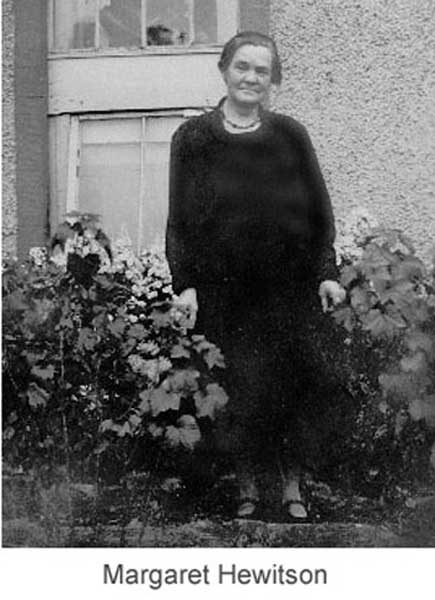
In 1889, Henry Hewitson bought Beech House and Beech Cottage, for which the deeds when they were sold in1917, identified Henry as a postmaster. His second wife, Jane, seems to have taken over as the first sub-post mistress by the 1891 census in a part of Beech House, Henry having died in 1890. [12] She was assisted by her step-daughter, Margaret, who soon became postmistress. The post business was conducted in what is now the front room of Beech House, with a staircase leading to a bedroom upstairs; the position of the post box is still just visible in the wall on the roadside of this house.
After Margaret, the post-mistress was Jane Richardson, until 1946.
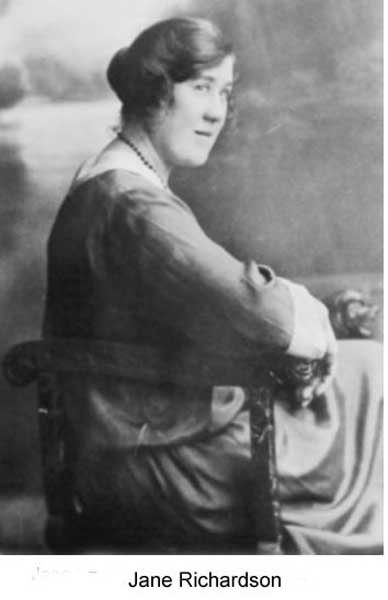
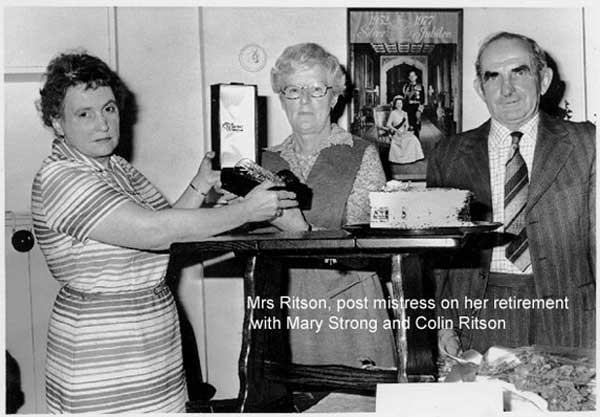
In 1946, Elizabeth (Lily) Ritson took it over in the cottage, now Derwenydd until she retired in 1979, a total of 33½ years service to the village.
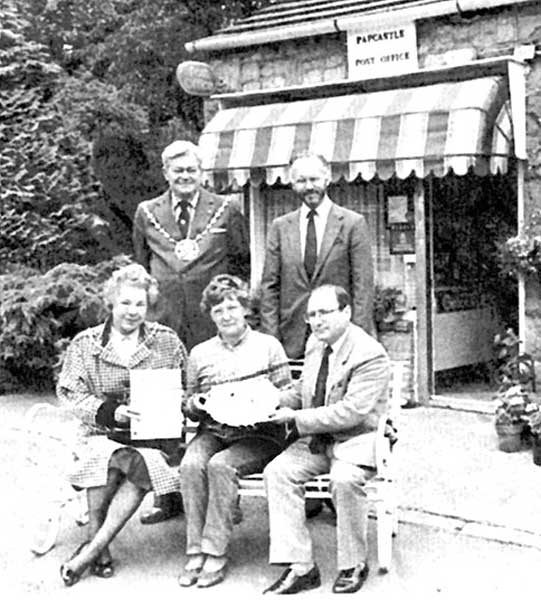
Dorothy Jackson then took over adding the post office to a shop at High Mount. In 1988, she received an award from Cumbria in Bloom for the best sub-post office in the county. However when she decided to retire in 2003, no one came forward to take on the post office business and this has been lost. In any event it may well have closed under the programme of the Post Office to reduce the number of non-viable post offices in 2008-9.
The School
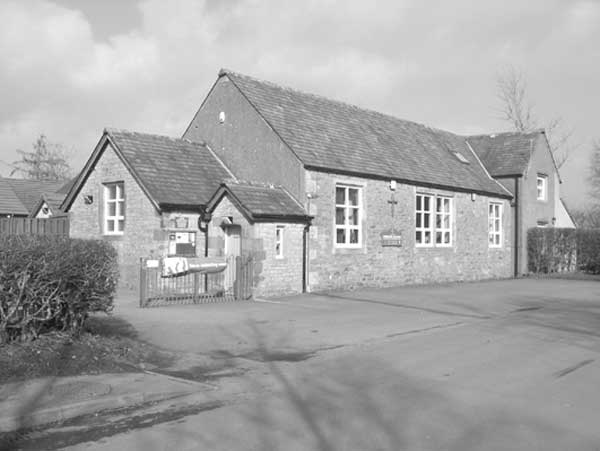
Hutchinson, [1845] stated
“Dovenby Grammar School was founded and endowed by Sir Thomas Lamp1ugh, about the year 1620. Mrs. Dykes is patroness, as his representative. The endowment consists of a charge on the tithes of Burgh on Sands since commuted; land in Dovenby, and a small payment to the master in connection with the hospital charity of Dovenby. The number of scholars varies from sixty to eighty. The building is a picturescue and commodious one, erected in 1843, from a design sanctioned by the Committee of Council on Education, who also granted £100 towards defraying the cost of building. The situation is pretty, sheltered as it is by the woods of Dovenby. Adjoining the school there is a playground, which was laid out at the time of the enclosure of the common.” [13]
Note: the map of 1774 (Chapter 5) shows a school, possibly in this position. The site was gifted by the Lord of the Manor in 1844 after the enclosure of waste land so maybe 1843 for the building is inaccurate.[14]
Now known as Bridekirk-Dovenby School, this is the original school for the church parish as a whole Bridekirk,Dovenby, Tallentire and Papcastle (still a church-school); more recently it incorporated provision for Redmain, Blindcrake and Isel. In the past many children from Papcastle would have walked the mile-and-a-half there every day. Until 1880 Education was not compulsory although the census shows that quite a number of children were listed as scholars before this date. In 1888, Fairfield School was opened in Cockermouth and certainly nowadays, there is a straight choice. For secondary education, Cockermouth School is the natural choice, again at least 1½ miles walk. (This opened in 1958 originally as Derwent School, a secondary-modern catering for those not up to Grammar School education requirements. In the 1970’s the Grammar School and Derwent School were amalgamated as a single comprehensive school, initially on two sites.) It is understandable, certainly in inclement weather, that parents think in terms of driving children to and from school, creating even in Cockermouth a short-lived traffic problem due to the school run.
[See Appendix 2]
The Parish Council
As noted in Appendix 5, civil parish councils came into being in 1894. In 1974 local government was again restructured with the demise of Urban and Rural District Councils forming Allerdale District Council, subsequently redesignated as Allerdale Borough Council. This embraces areas as far apart as Wigton, Silloth, Keswick, Workington and Maryport. Papcastle Parish Council was unchanged in 1974 (upto 1894, the village had been a part of the ecclesiastical parish of Bridekirk, which it still is for church purposes). For most purposes, especially for the censuses, the Papcastle enumeration district included the Gote, which only transferred to Cockermouth Urban District Council in 1935. The parish then as now, included a number of outlying properties Dovenby Craggs farm, South Lodge, Ann’s Hill, Bonny Hill and the Railway station (now a dwelling named Paplava). For censuses, Hames Hall (previously Derwent Bank) was also included. Technically the parish council now comes under the supervision of Allerdale Borough Council, has nine members and meets every two months. [15]
Papcastle Parish Council has been notable for the continuity of its clerks only three during its lifetime so far. James Wakefield started in 1894 and was only replaced by Cyril Dobson in 1945 after 51 years.
Cyril, in parallel with serving Camerton Parish Council for 38 years, clerked Papcastle until 1984, for 39 years. He was succeeded then by Barbara Creighton (now Mrs. Lamb), already in 2008, 24 years in post.
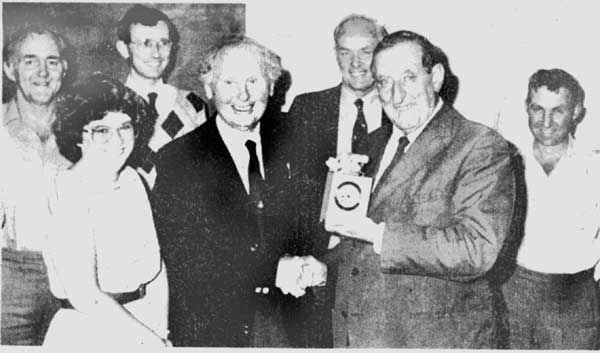
Presentation to Cyril Dobson on his retirement from Parish Council Clerk in 1984